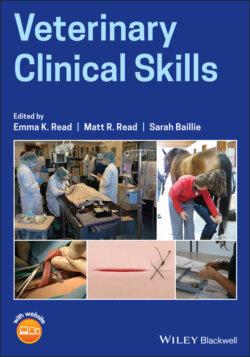Читать книгу Veterinary Clinical Skills - Группа авторов - Страница 16
Societal and Professional Needs
ОглавлениеThe needs of clients, as well as employers, should be considered when designing a clinical skills curriculum. For example, it was shown that the majority of veterinary clients viewed technical skills (such as prioritizing patients according to illness or injury, collecting blood samples, performing a preliminary examination of an animal on admission, assisting with physical therapy techniques and making radiographs) together with emotional intelligence and professional attributes, important in the clinical practice of veterinary technology graduates with whom they interacted in the veterinary practice setting (Clarke et al., 2015). Client interviews showed that clients attached importance to graduates demonstrating professional competence, and it was therefore concluded that data such as this is useful in the design of a professional and market‐driven veterinary technology curriculum (Clarke et al., 2015).
Veterinary students are licensed to practice unsupervised directly after graduation and therefore should be graduating with the knowledge and skills required to meet professional and societal demands (Greenfield et al., 2004). However, as described under student needs, many graduates do not have confidence in their own skills and abilities, which is also recognized by employers (Greenfield et al., 1997; Prescott et al., 2002; Lavictoire, 2003). In the review by Malone (2019), she described a collaboration between Banfield® Pet Hospitals and the University of Minnesota to identify challenges that were encountered among the 800 new small animal graduates hired each year. The survey identified surgery, dental skills, catheter placement, and venipuncture as being “critical barriers” to the success of the new graduates, leading to decreased confidence and productivity along with medical errors and increased stress to the entire team.
Lastly, Duijn et al. (2020) used entrustable professional activities (EPAs) to evaluate graduate readiness for practice. An EPA is defined as “an essential task of a discipline (profession, specialty or subspecialty) that an individual can be trusted to perform without direct supervision in a given health care context once sufficient competence has been demonstrated” (ten Cate, 2005). Duijn et al. (2020) identified five EPAs they believed were core educational objectives for veterinary curricula and surveyed new graduates regarding their readiness to perform these EPAs, including the degree of supervision they required. They found that, on average, it took graduates approximately six months until they felt ready to execute all five EPAs with distant supervision. Only after 10 months did participants feel fully competent to execute EPAs unsupervised. The authors noted that these results suggest the expectations of graduate performance may need to be nuanced but also the importance of adequate preparation of veterinarians during their education and the importance of guidance during early career to foster a successful transition from veterinary school to clinical practice. Clinical coaching of veterinary nursing students in practice is well established in certain parts of the world, but this could also be extended to veterinary nurses at the beginning of their careers to help navigating the new work environment and adapt to new situations (Kerrigan, 2018).
